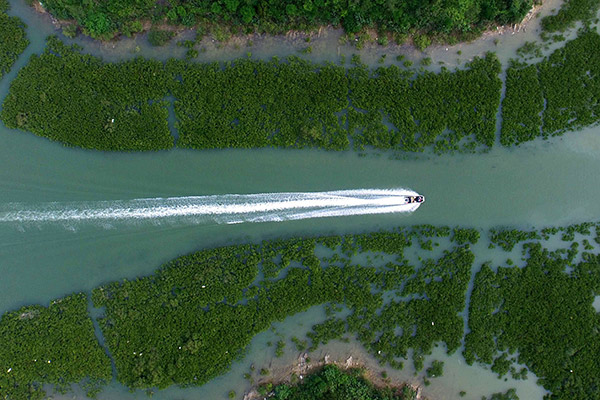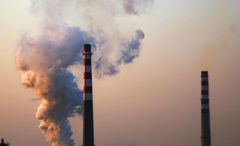Marine water meets quality standards
2017-03-23
China Daily
 A yacht sails through mangrove swamps in a natural reserve area in Qinzhou, Guangxi Zhuang autonomous region, in May.[Photo/Xinhua]
A yacht sails through mangrove swamps in a natural reserve area in Qinzhou, Guangxi Zhuang autonomous region, in May.[Photo/Xinhua]
The vast majority of China’s marine water met high quality standards last year, according to an annual report by the State Oceanic Administration.
The Bulletin of China Marine Environment Status, released on March 22, said 95 percent of marine water met the highest standard in the country’s four-tier system. The figure is 1 percentage point higher year-on-year.
In the four categories, Level 1 marine water must conform to the standard that is suitable for ocean fishery, natural conservations on the sea and conservations for end angered marine life. Level 4, the lowest level, refers to water suitable for use in port areas and ocean development areas.
Among China’s total of about 3 million square kilometers of marine water, the area below Level 4, meaning unable to meet the lowest standards, fell by 9,310 sq km in the spring and 2,600 sq km in the summer last year, the two seasons when marine activities most frequently take place.
The result shows significant improvements, as the area of such heavily polluted waters only dropped 540 sq km and 1,120sq km respectively, in last year’s report, which was compared with 2014.
However, the report warned that some offshore areas face severe pollution. Among 44 bay areas each with an area of above 100 square kilometers, 17 have water quality below Level 4 year-round.
Sun Shuxian, deputy director of the administration, said a “bay chief” mechanism will help tackle pollution, with a top official in each region being held responsible for the environment where the bay is located.
Water quality near sewage draining exits in offshore areas saw no significant improvement. Last year, the quality of 78 percent of the water near sewage draining exits was at or below Level 4, according to the report.
The report added that the sea level increased by 38 millimeters last year. Wang Hua, head of the administration’s Marine Forecast and Disaster Relief Department, said the sea level fluctuation largely resulted from the El Nino and La Nina phenomena.
He added that the average annual increase in sea level in China from 1980 to 2016 was 3.2mm, higher than the global average.



